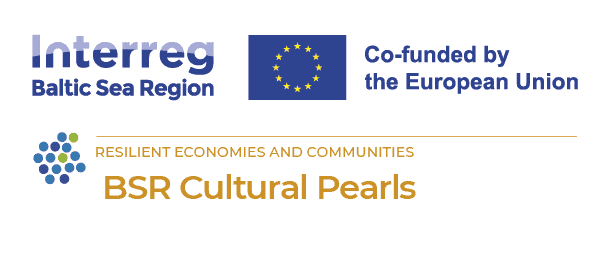
Securing Culture: Culture and community actions in times of insecurity
21 July 2025
Under the title “Securing Culture” the Cultural Pearls Network gathered local authorities across the BSR, Ukraine and Moldova to discuss how the shifting security landscape is affecting cultural policy and budgets on a local level. Defence, security, and civil preparedness are now at the forefront of policy agendas. Participants examined how this shift is draining funding and political attention away from cultural activities at local, national, and regional levels. The question of how to demonstrate the indispensable role of culture in fostering social cohesion and resilience, while safeguarding funding, emerged as a central challenge.
A poll conducted during the online session established that sixty percent of participants experienced that there was political awareness and support for culture’s role for social cohesion, well-being and resilience. Another 26% indicated that while awareness was low, there was an eagerness from local politicians to learn more about what culture could do. Meanwhile, half of the participants (50%) had already experienced cutbacks or diminishing attention for cultural activity or were expecting it in the near future, as a result of the salience of security related issues.
A recurring theme was the strategic alignment of cultural initiatives with societal needs regarding security and preparedness. Experts highlighted that cultural activities—when thoughtfully integrated—can serve as powerful tools for community building, identity reinforcement, and cohesion, even in times of crisis or austerity. Sharing tangible examples, participants discussed how cultural projects can be positioned as vital contributions to societal resilience, thereby strengthening their case for support amid competing priorities. Increasingly, social cohesion is regarded a key component of national security – yet it remains unclear how it should be strategically addressed or by whom. Meanwhile, the future of the European cohesion policy and its funding have also been put into question, further aggravating fears that key initiatives across social and cultural sectors will be left unfunded.
The session featured practical insights on fostering this alignment. Experts emphasized that articulating the value of cultural activities in terms of community, social capital, and cohesion can help elevate their status within policymaking and funding decisions. For instance, cultural and artistic practices can bolster community identity, facilitate intergenerational dialogue, and provide platforms for increasing societal preparedness—an approach that aligns with a whole-of-society perspective.
Participants also scrutinized the current impact on cultural departments and civil society actors, recognizing that many already face constraints due to reduced budgets and diminished political support. This reality underscores the need for innovative strategies to sustain and amplify the influence of culture in resilience-building efforts.
Additional insights were gleaned from Ukrainian partners, whose experiences with conflict and community rebuilding shed light on the critical contributions of culture for communities under duress. Their perspectives reinforced that even in highly unstable environments, cultural expression remains a vital tool for social cohesion, healing, and community strength.
The discussion also explored how a whole-of-society approach—encouraging collaboration across governmental departments, community initiatives, civil society, and cultural organizations—can serve as an effective framework for embedding culture into resilience strategies at the local level. Interdepartmental cooperation and cross-sector partnerships were identified as key enablers in this endeavour.
In summary, the session reaffirmed that cultural expression is not peripheral but central to resilient societies. By strategically aligning cultural activities with societal security and resilience objectives, communities can foster stronger identities, civic engagement, and social cohesion—ultimately contributing to more adaptable and enduring societies.





